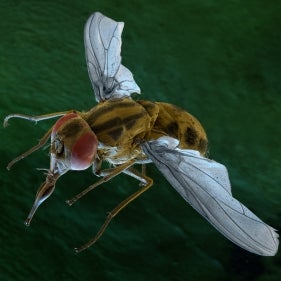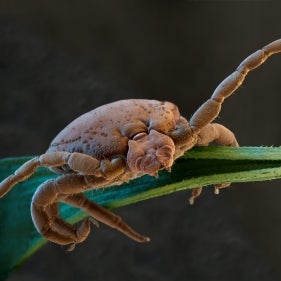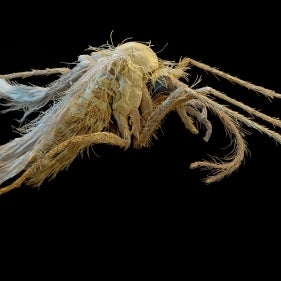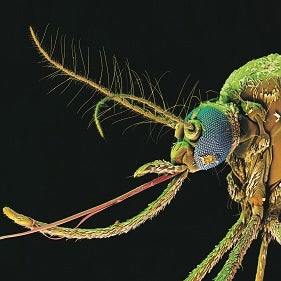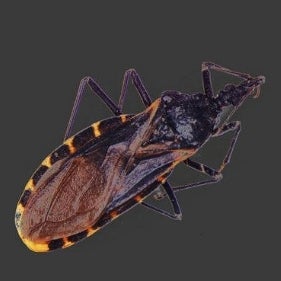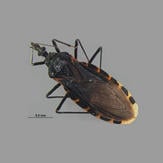Home -> Vectors -> Kissing bugs
VECTORS
Select a vector
KISSING BUGS
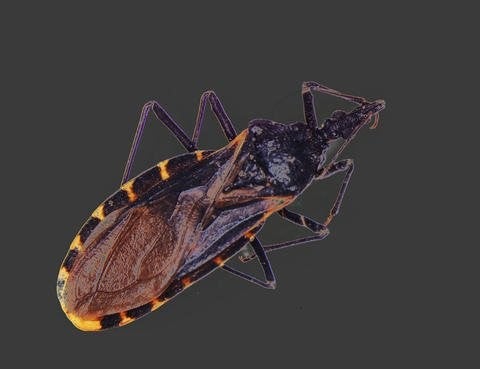
Kissing bugs are members of the subfamily Triatominae. They carry this colloquial name due to their nocturnal feeding on the lips of sleeping humans. But they also have a large variety of other mammal hosts. Most species of this subfamily are only known from the New World.
The veterinary and medical importance of kissing bugs results from their ability to transmit the pathogenic agent of Chagas disease, Trypanosoma cruzi (see under trypanosomosis), which can be a major health issue. Chagas disease remains one of the biggest public health problems in Latin America, causing incapacity in infected individuals and more than 10,000 deaths per year according to WHO. Dogs may develop clinical disease as well, but are especially constituting an important reservoir for human infection, together with cats, rodents, and other mammals.

LOOKING FOR DISEASES?
You are looking for specific diseases in companion animals which are transmitted by vectors, so-called companion vector-borne diseases (CVBD)?
Click hereEXPLORE OUR CONTENT
 CVBD MapsThe CVBD Occurence World Map presents country-specific situations based on current scientific knowledge and feed-back from experts around the world in an easy-to-grasped way. |
| Read more-> |
 ResourcesElanco Animal Health supports education in parasitology and especially in the field of vector-borne diseases. Access image collections, discover the World Forum calendar, interesting links and our glossary. |
| Read more-> |
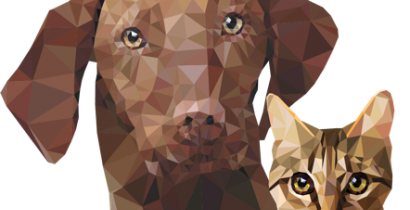 CVBD World ForumThe CVBD World Forum is a working group of leading international experts with the mission to enhance knowledge and communication on companion animal vector-borne diseases for the improvement of animal, human, and environmental health. |
| Read more-> |

